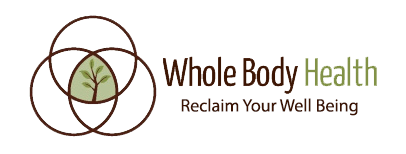
As these toxins are ingested, inhaled and/or absorbed by our bodies, they are metabolized by the liver and kidneys, which can sustain enough damage over time as to allow toxic build up in the blood and cause severe symptoms and sickness. More and more research is proving that long-term low-level chemical exposure, as well as short-term high-level exposure, can dramatically increase the rates of asthma, birth defects, developmental disabilities and chronic disease, including cancers.
Testing for toxins in the blood can be done with several simple blood and urine tests and often reveals frightening results. In fact, testing of this sort routinely turns up 200 plus chemicals, with concentrations in youth samples sometimes triple that of adults living in the same household.
Many of these toxins come from residue on the foods we eat, or additives in local water supplies, so many health-conscious consumers have switched to organic produce, non-GMO grown products, filtered water and other all-natural alternatives whenever possible. While this does reduce exposure to a number of toxic substances, the foods we eat are only part of the problem.
There may be little we can do about environmental toxins outside of our homes, but there are things we can do inside our living spaces to limit contact with chemicals and live a healthier lifestyle.
Know What’s in The Products You Use
It’s a good rule of thumb to not eat or drink foods with ingredients you can’t pronounce or whose meaning you have no idea. However, if you’re curious, at least you can google the listed ingredient to find out if it’s something you wish to avoid (Propyl Gallate) or something you might want to try (Kombucha.)
It’s the same with beauty and personal care products. Absorbed directly into the skin and passed into the bloodstream after application, the benefit or harm resulting from listed ingredients can be immediate. L-ascorbic acid (vitamin C,) Retinols (derivatives of Vitamin A,) and alpha hydroxy acids all provide nourishing, anti-aging and healing properties. Conversely, propylene glycol, sodium laurel sulfate and parabens are known toxins with potentially damaging effects, yet are regularly used in mass-marketed skin care products.
It gets more difficult with household cleaners because there are no government regulations requiring product manufacturers to reveal what’s in them — not even the ones that can potentially cause cancer. These widely used products are the most toxic on the market, and while many have labels warning consumers not to ingest them and to keep them away from children, exposure is still possible. Kids crawl on freshly mopped floors, grab an apple off the counter, and inhale harmful fumes. In fact, the fragrances from seemingly harmless air fresheners, laundry products and scented candles emit a variety of volatile compounds, many known to be hazardous, but are listed on labels simply as “fragrance,” or “perfumed oils.”
There are a variety of all-natural cleaning products on the market that voluntarily list all of their ingredients. Find out all you can about the products in your home. Information is your friend.
From FYI to DIY
If you want to get and remain healthy in a toxic world, sometimes you have to take matters into your own hands. If you can’t identify all of the ingredients in the beauty and household products you use, or if all-natural products are hard to find or become cost prohibitive, consider making your own. It takes some effort and research at the start-up, but is easier than you think — and many of the ingredients are probably already in your pantry.
All-natural ingredients like lemon juice, baking soda, vinegars, coconut and olive oils, have multiple uses as household cleaners and in beauty care routines. Therapeutic grade essential oils offer numerous disinfectant and aromatic uses, with the added bonus of having proven medicinal properties.
* Coconut oil, mixed with turmeric and peppermint essential oil is a naturally whitening tooth paste.
* Vinegars are not only great for cleaning windows and floors, but work very well for neutralizing laundry odors when added to the the rinse cycle (and will not make your towels smell like salad!) Apple cider vinegar is a great facial toner.
* Lemon juice removes stains from toilet bowls, works as a natural laundry bleach and can also remove sunspots and reduce wrinkles.
And you can literally eat all of these ingredients with nutritional benefit! The internet is full of recipes for natural cleaning and beauty products that work.
It’s true that many consumers don’t have the desire or time to make their own products, but whether you buy them or whip them up in your kitchen, a little research can help you stop eating toxic foods and using toxic products in your home.
